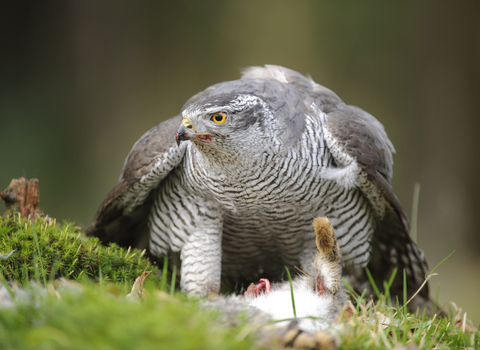
Goshawk ©Andrew Mason
Goshawk
Known as the phantom of the forest, goshawks can fly through the trees at up to 40km per hour as they hunt birds and small mammals.
Scientific name
Accipiter gentilisWhen to see
January to DecemberSpecies information
Category
Statistics
Length: 49-56cm (male). 58-64cm (female)Wingspan: 90-105cm (male), 108-120cm (female)
Weight: 850g (male), 1.5kg (female)
Average lifespan: 7 years
Classified in the UK as Green under the Birds of Conservation Concern 5: the Red List for Birds (2021). Protected in the UK under the Wildlife and Countryside Act, 1981.
